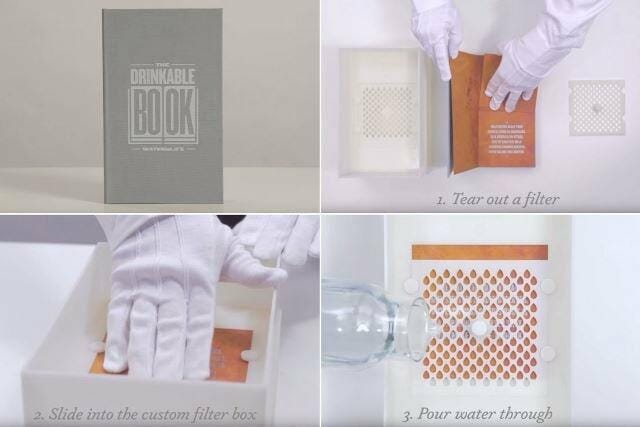Drinkable Book Purifies Contaminated Water

In collaboration with a non-profit organization, an American researcher has designed a book with silver-saturated pages to filter contaminated water. The book is a cheap and sustainable solution to avoid diseases in communities with severe hygiene problems.
Water pathogens can be transmitted by drinking, bathing, washing or preparing and consuming food. Diarrheal disease is the most common effect of water pathogenic microorganisms, causing 1.8 million deaths annually. 88% of those deaths, according to the World Health Organization, can be directly attributed to contaminated water supply.
Theresa Dankovich, a researcher from Carnegie Mellon University, had a brilliant idea that would serve two purposes: the drinkable book, an artifact to clean water and encourage hygienic practices. The book´s pages are made of cellulose and contain 1% of silver nanoparticles. Silver is an efficient antimicrobial agent, so when water is filtered through the page, bacteria absorb the metal ions and die. Later, she added also copper nanoparticles to the mix, which resulted in thick and solid sheets. The pages were tested in a rural community of South Africa. A water sample with 200000 Escherichia coli CFU (colony forming units) had just 10 CFU after filtration. Other tests in Bangla Desh and Ghana in cooperation with the non-profit organization WATERisLIFE eliminated 99.9% of E. coli from the water.
After witnessing the positive results of the tests, Dankovich founded the startup pAge Drinking Paper and designed the book in collaboration with WATERisLIFE . Each book contains 25 pages that can be torn out to use as filters, and each page contains valuable sanitary information. One book can filter one person´s water for four years.
Source: gencat
